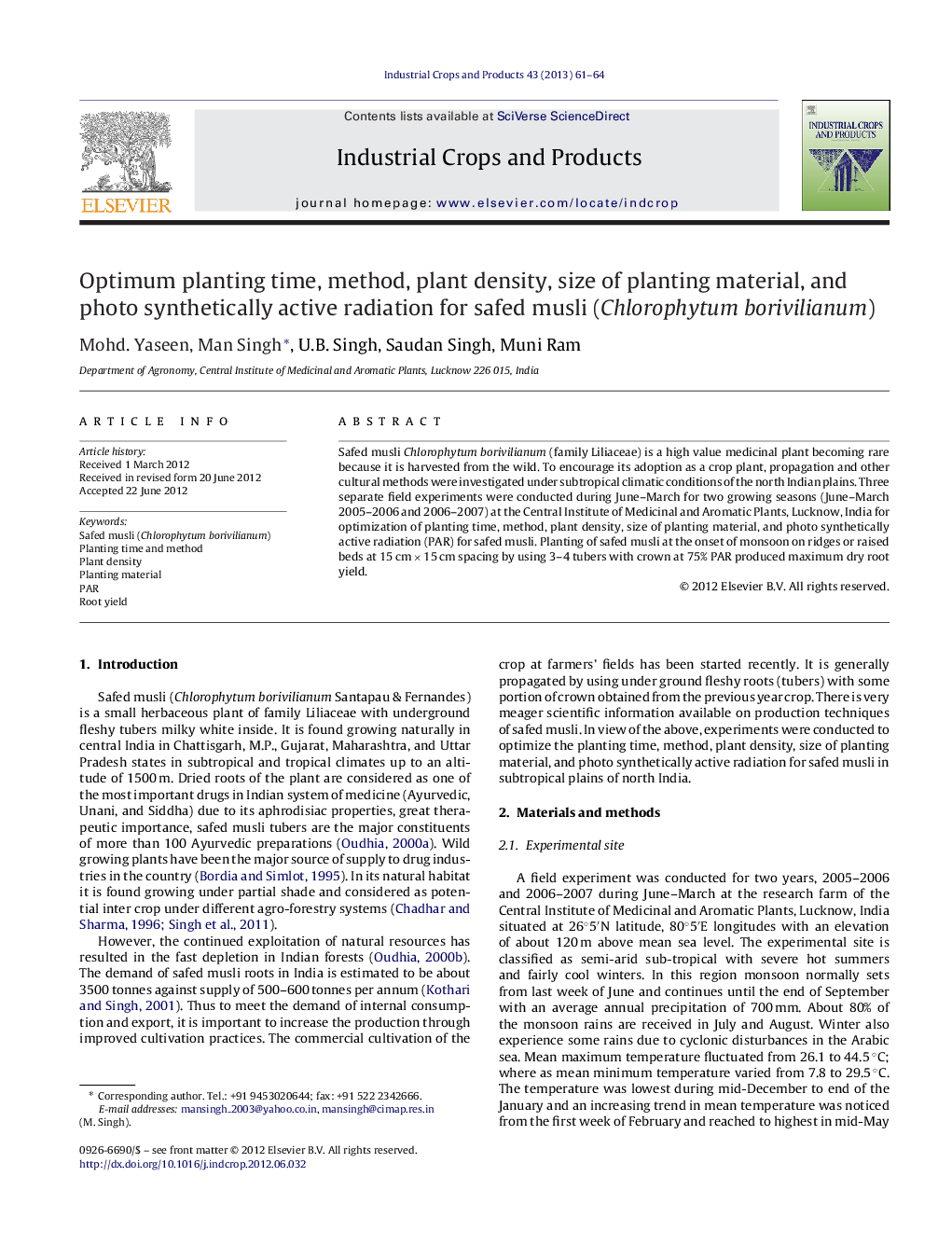| Article ID | Journal | Published Year | Pages | File Type |
|---|---|---|---|---|
| 4514096 | Industrial Crops and Products | 2013 | 4 Pages |
Safed musli Chlorophytum borivilianum (family Liliaceae) is a high value medicinal plant becoming rare because it is harvested from the wild. To encourage its adoption as a crop plant, propagation and other cultural methods were investigated under subtropical climatic conditions of the north Indian plains. Three separate field experiments were conducted during June–March for two growing seasons (June–March 2005–2006 and 2006–2007) at the Central Institute of Medicinal and Aromatic Plants, Lucknow, India for optimization of planting time, method, plant density, size of planting material, and photo synthetically active radiation (PAR) for safed musli. Planting of safed musli at the onset of monsoon on ridges or raised beds at 15 cm × 15 cm spacing by using 3–4 tubers with crown at 75% PAR produced maximum dry root yield.
► We report the optimum planting time, spacing, planting method, size of planting material for safed musli. ► Optimum photo synthetically active radiation for safed musli. ► Safed musli should be planted at the on set of monsoons on ridges or raised beds. ► Safed musli should be planted at 15 cm × 15 cm spacing by using 3–4 tubers with crown for maximum root yield. ► Safed musli can be grown successfully under the partial shade of orchards/agro forestry or as an intercrop.
